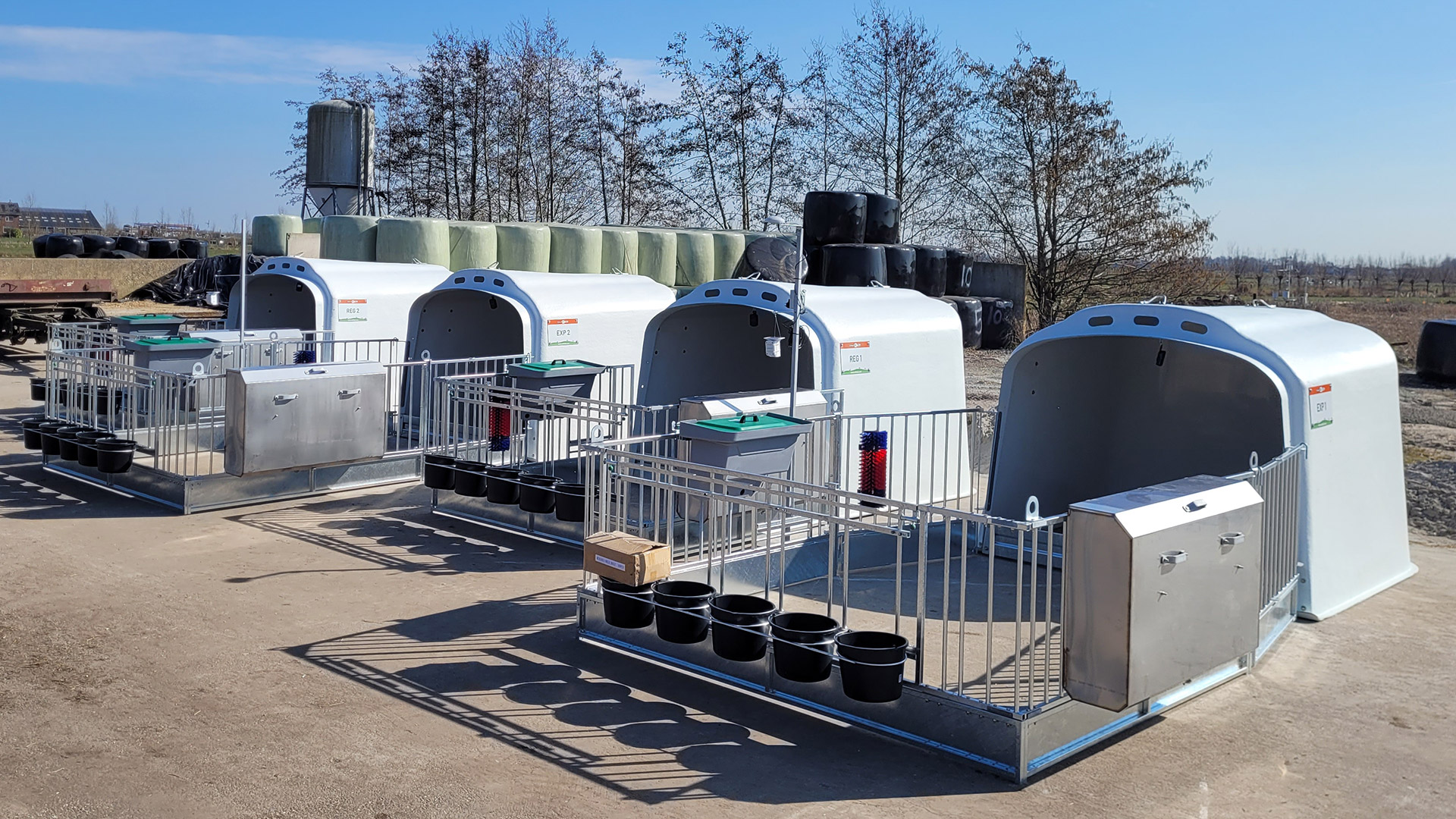CalfOTel and KTC Zegveld Launch Research on Calf Housing
CalfOTel and the Kennis Transfer Center Zegveld (KTC Zegveld) are joining forces to conduct research into optimal calf housing. Over a period of one year, two aspects will be investigated.

CalfOTel and the Kennis Transfer Center Zegveld (KTC Zegveld) are joining forces to conduct research into optimal calf housing. Over a period of one year, two aspects will be investigated.

Over a period of one year, two aspects will be investigated: the climate in outdoor group housing and the impact of increased space per calf on labor.
Climate and Space Requirements
Regulations regarding climate and the transportation of calves during high temperatures have been tightened in recent years, and are expected to become even stricter. However, there is still much uncertainty about the actual temperature conditions in outdoor housing and the effectiveness of measures aimed at improving the climate and welfare of the calves.
Additionally, the requirements regarding the minimum space per calf are increasing. Various certification schemes already set a standard of 3.0 m² per calf, and it is likely that this guideline will eventually be incorporated into national and European legislation. While it is known that more spacious housing improves the welfare of the calves, the impact of this on labor demands and the associated costs for dairy farmers remains unclear.
Climate Research
To analyze the climate conditions in group housing, advanced sensors have been installed at KTC Zegveld, both inside and outside the four group housing units. These sensors continuously register temperature and humidity. Additionally, a weather station has been installed to measure air temperature, wind speed and direction, sun intensity, and precipitation. This provides a detailed, continuous overview of the environmental conditions in the four housing units. Two of the four group housing units will be equipped with climate-improving measures, while the remaining two will serve as a control group. This allows for a precise comparison of the effects of the different measures and helps determine the magnitude of the impact.
Labor Efficiency Research
For the labor study, two conventional group housing units and two experimental group housing units have been set up, all equipped with identical feeding systems. Throughout the study period, labor requirements will be recorded for activities such as bedding, re-bedding, keeping the units clean, moving calves, mucking out, and cleaning the housing units and outdoor areas. Variables such as general care tasks, like feeding and calf health checks, will not be included. Based on the data collected, it will be determined at the end of the study period whether a larger group housing setup leads to higher labor demands for dairy farmers.
Duration and Publication of Results
The research has recently started and will last at least one year to account for all seasons and to ensure that KTC Zegveld staff gain experience with the various housing systems. The results of the research will be published at the conclusion of the study.
Future Outlook
Through this research, CalfOTel and KTC Zegveld hope to gain valuable insights that can improve the welfare of the calves and help dairy farmers optimize their operations in the future. For more information about this project, please contact CalfOTel.